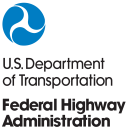Ways to Get Involved
Whether you want to further conservation, learn more about nature or share your love of the outdoors, you’ve come to the right place. National wildlife refuges provide many opportunities for you to help your community by doing what you love. National wildlife refuges partner with volunteers, youth groups, landowners, neighbors and residents of urban and coastal communities to make a lasting difference. Find out how you can help make American lands healthier and communities stronger while doing something personally satisfying.
Volunteering
Volunteers are always welcome at the Refuge. You can volunteer to help with biological field work, noxious weed removal, habitat restoration, maintenance projects, trail and campground maintenance, visitor contacts or some other area you are passionate about.
We have college students that volunteer during the week during the school year; adults that provide weekend campground maintenance and visitor contacts; folks that build bird boxes and others that monitor them for activity, and folks with RVs that park on the Refuge for the summer and lend a hand with their skills in exchange for free hook-ups for their RVs. Contact the Refuge through this web site, call headquarters at 509-684-8384 or email Kelly Connall for more information.
Volunteer Opportunities
Our Partners
Friends of Little Pend Oreille NWR
The Friends of Little Pend Oreille NWR is a non profit organization that supports the Refuge's management plans. They assist with outdoor environmental education for local school groups, trail construction and maintenance, bird surveys, trash clean up and staff a display at local events to inform and educate the public about the Refuge. Visit the Friends website to learn more.
International Selkirk Loop
The International Selkirk Loop is a 280 mile scenic drive through eastern Washington, northern Idaho and southeastern British Columbia. Our Refuge can be accessed from the Flowery Trail Loop, an 80 mile side trip loop in eastern Washington. We are also one of the stops on their birding map. Visit the International Selkirk Loop website to learn more.
Washington Department of Fish & Wildlife
The Washington Department of Fish and Wildlife is currently doing field work on the Refuge to determine what species of bats are here and to study the movements of white-tailed deer. They also are given surveys on fishing success in our lakes and provide us with hunter success reports annually. Visit the Washington Department of Fish and Wildlife website to learn more.
Washington Audubon Society
The Refuge is part of the Great Washington State Birding Trail. We are on the Palouse to Pines Loop that covers all of eastern Washington. The Washington Audubon Society prepared a brochure that includes the habitats of each birding area, the best time of year to visit, where to go and what birds can be seen in these areas. Visit the Washington Audubon website for more info and a copy of this brochure.
Washington Trails Association
The Washington Trails Association has supplied the manpower to construct hiking trails on the Refuge the last few summers. They constructed the Mill Butte and Big Pine hiking trails. Visit the Washington Trails Association website to learn more.
Kalispel Tribe of Indians
We have worked with the Tribe in wetland restoration on our Cusick Unit in Pend Oreille County.
University of Washington
Rare Plant Care and Conservation is a program out of the University of Washington in Seattle that monitors rare plants. Here they monitor adder's tongue, blue eyed grass and Phipps' hawthorne.
Washington Department of Ecology
Washington State Department of Ecology samples the Little Pend Oreille River as part of the Status and Trends Monitoring for Watershed Health and Salmon Recovery Program. The sampling consists of collecting physical measurements as well as water samples, macroinvertebrate samples, periphyton samples, and sediment samples.
Washington State Department of Health
The Refuge cooperated with the Washington Department of Health to capture and identify mosquitos as part of their state wide West Nile Virus surveillance program.
Eastern Washington University
A graduate student sampled reaches of the Little Pend Oreille River in the Refuge as part of a research project examining the relative abundance and distribution of all the fish species located with the Colville River Watershed.
Outreach
Open the door to a potentially life-changing experience. If you land a student internship, a fellowship or a volunteer opportunity at a national wildlife refuge national wildlife refuge
A national wildlife refuge is typically a contiguous area of land and water managed by the U.S. Fish and Wildlife Service for the conservation and, where appropriate, restoration of fish, wildlife and plant resources and their habitats for the benefit of present and future generations of Americans.
Learn more about national wildlife refuge , fish hatchery or other U.S. Fish and Wildlife Service site, you’re bound to come away with new insights and excitement about conservation.
Depending on funding, the refuge strives to hire a 4-person Youth Conservation Crew every summer to work on a range of maintenance and habitat projects, while being introduced to conservation. We also often secure seasonal help in the biological program through the Student Conservation Association.











